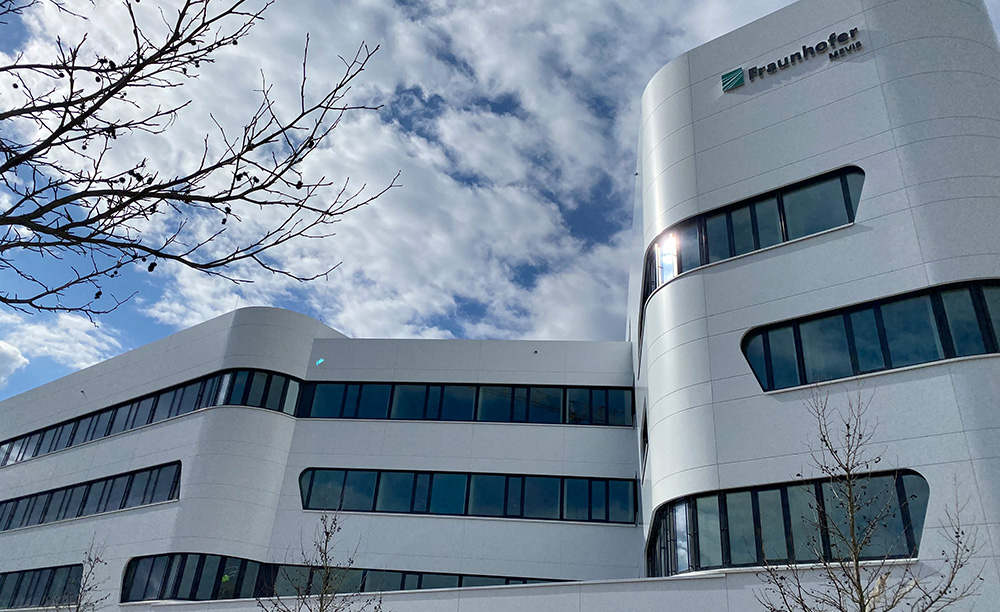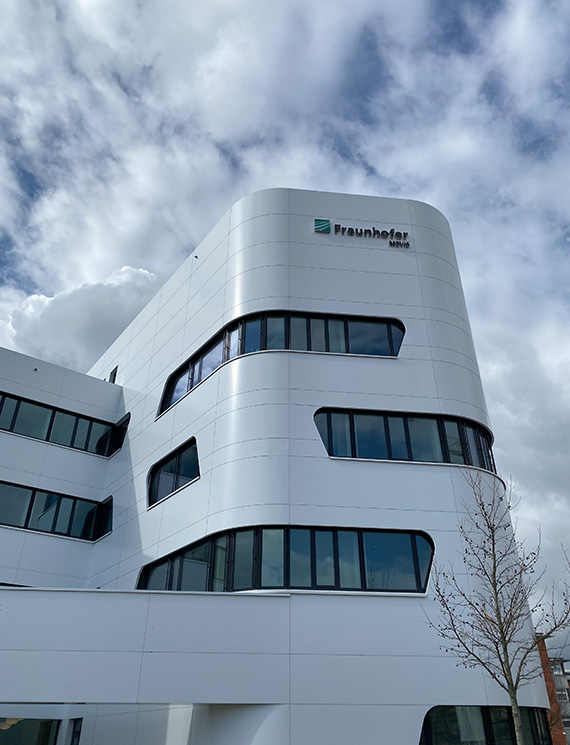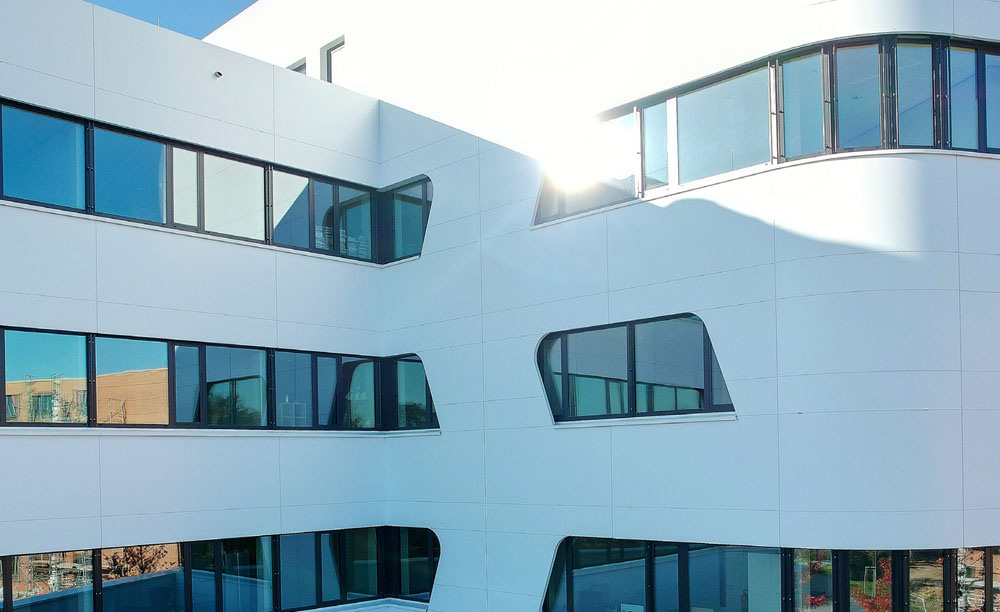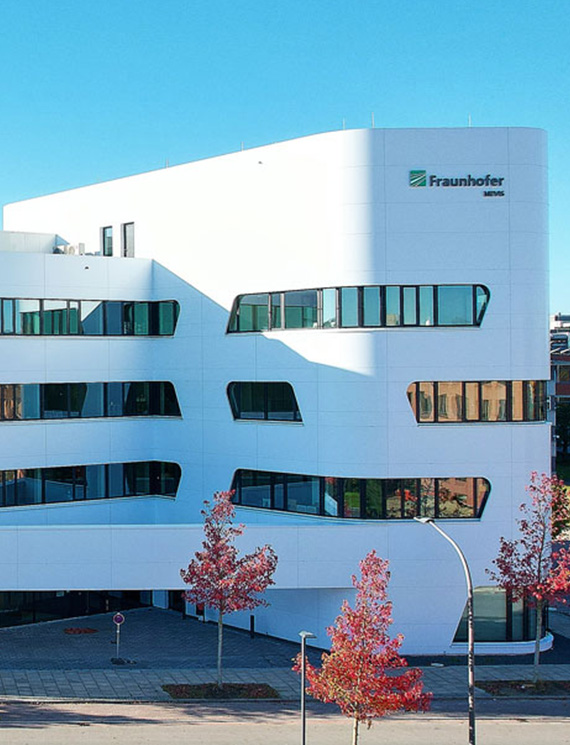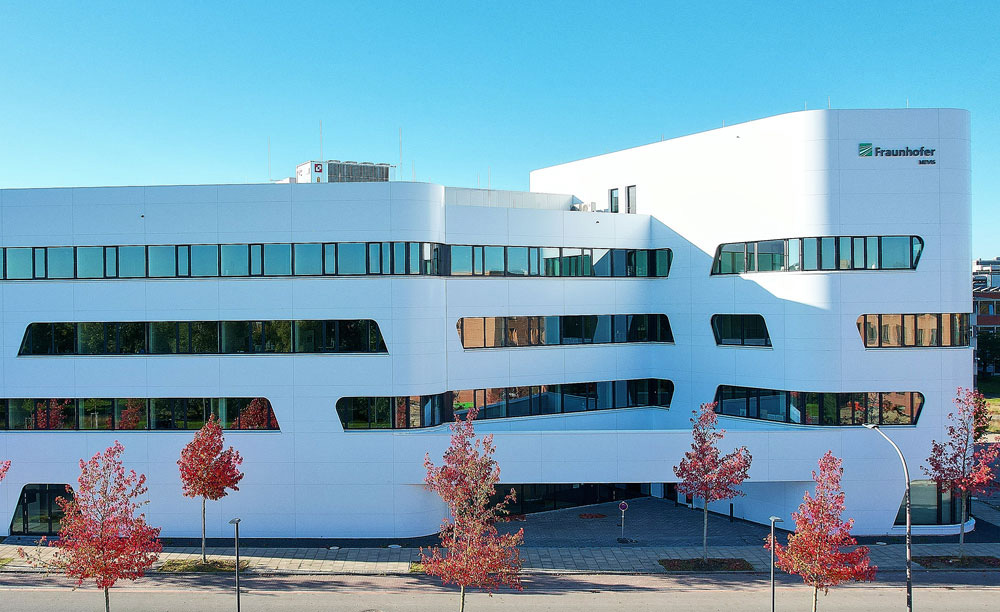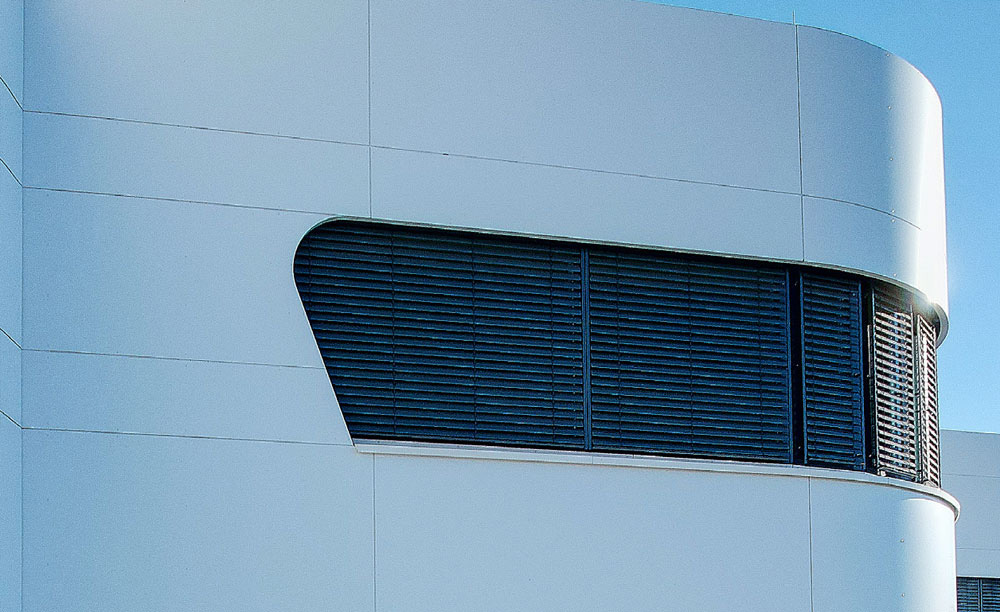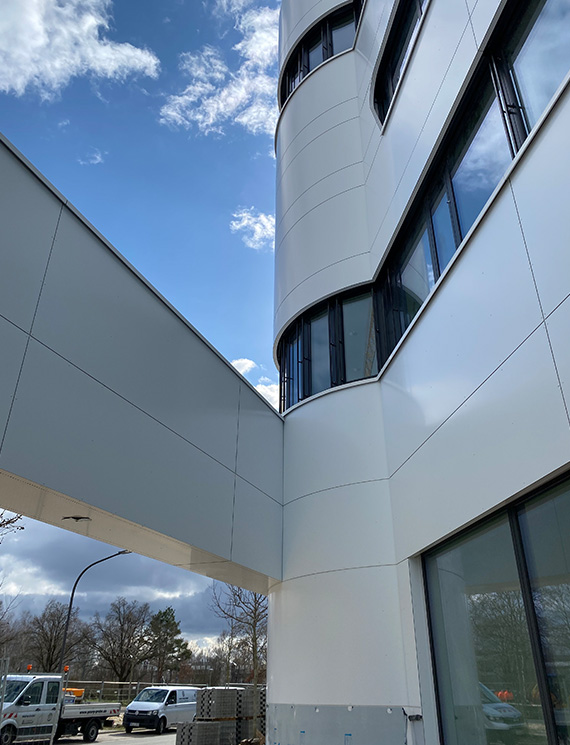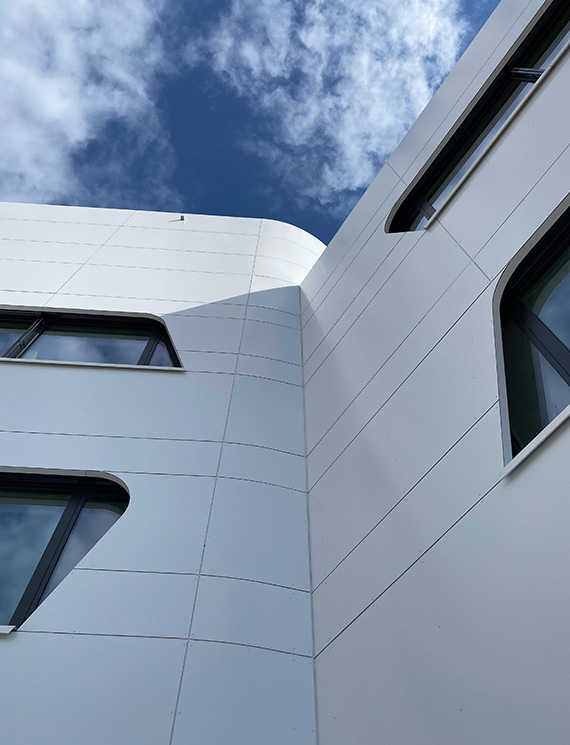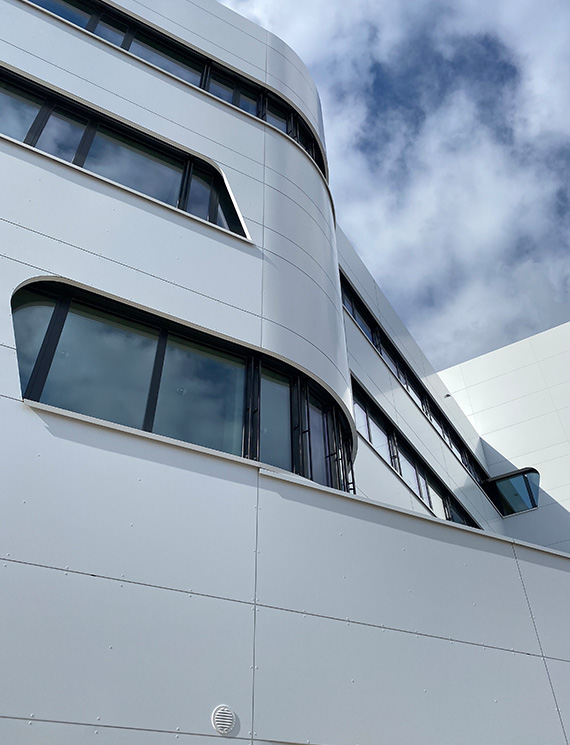Curved cladding design embodies the cell structure
The modern sub-structure system reflects the building design.
The extraordinary Fraunhofer Institut MEVIS Fraunhofer Institute for Digital Medicine, well-known for software systems for computer-aided medicine is situated on the Campus of University of Bremen. In order to highlight the research remit of this complex of buildings, Bremen architect’s office Haslob Kruse + Partner designed three intermeshed organically shaped building structures, modelled on cell structure and completed in 2021, thanks to the ALWI-S EcoClad profile system from SYSTEA.
The challenge with this curved suspended back-ventilated cladding with both straight and curved design, was to enable a sub-structure system to be used, which is suitable for reducing the number of fixing points, and has fewer visible connecting elements in the plane of the cladding facade.
We were able to do justice to these demands through circumferential positioning of Alucobond cladding. The EcoClad system is comprised of special T profiles, which simply guarantees take-up of horizontal carrier profiles.
Realising a sophisticated cladding design in spite of complexity
Hadi Teherani Architects divided the building complex with its 43,000 square metres of gross floorspace into several buildings grouped around an interior courtyard, which makes reference to the town planning context.
The exterior with ceiling to floor windows, implemented as a transom and mullion cladding design, was even fitted with guide bars in advance by the manufacturer – made of 12 mm thick aluminium flat bars, which serve for take-up of the SYSTEA KU35 NVA sub-structure system. Folded cassettes made of black Alucobond panels were then used in this plane, which were positioned suspended in the SYSTEA sub-structure system. A suspended vertical lamella structure of anodised aluminium profiles was positioned in the guide bars above this. The individual pilaster strips in the region of the parapet cladding are similarly not anchored in the structural shell of the building, whereby a hovering effect is produced in front of the facade.
The ALWI-S EcoClad profile system from SYSTEA was used, which was developed for visible fixing of large-format cladding panels made out of aluminium composite panels or aluminium flat sheet metal.
The architects selected white Alucobond panels as cladding for the Fraunhofer MEVIS Research Centre, which affords the building a fresh modern impression across an area of ca. 3,000 square metres, and at the same time accentuates the curved lines.
Elaborate technology meets ambitious design
Thanks to the systematic structure of SYSTEA sub-structure systems, different requirements can easily be met. A sub-structure system based on ALWI-S, is comprised of vertical L and T aluminium carrier profiles, wall brackets and optional accessories.
Project details
- Project: Research Center Fraunhofer MEVIS
- Place: Bremen
- Country: DE
- Building type: Commercial + Industry
- Type of construction project: New build
- Completion: 2021
- Wall bracket: Aluminum
- SYSTEA profile system: ALWI-S EcoClad
- Cladding material: Aluminum composite panels
- Fastening: Visible
- Installer: Henke AG (DE)
- Architect: Haslob Kruse + Partner Architekten mdB
- Photos: Henke AG, A. Bowser
If you would like further information, please contact us.

